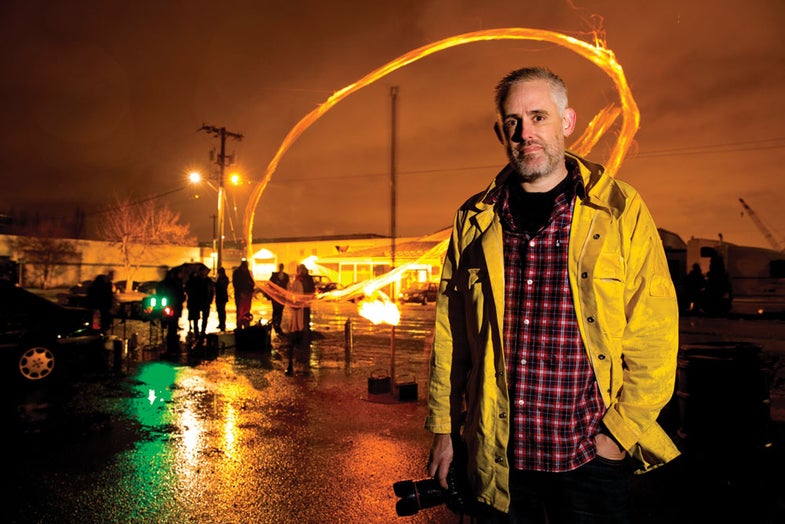I Photographer: Weird Sports Shooter Sol Neelman
From ostrich races to flaming tetherballs, this photographer captures the stranger moments in sports

What was the first weird sport you photographed?
Roller derby. My first encounter was in 2005 in Austin, Texas. I was interested in their two start-up roller derby leagues, but wasn’t able to shoot them. I lived in Portland, Oregon, so I looked online, saw Seattle had a league, and I went. I was laughing, smiling, and having fun—I wanted more of that.
How did that differ from the work you had been doing?
I’d been working for_ The Oregonian_ for seven years, and access was kinda crappy. I also had editors to please, instead of just trying to make pictures that were fun for me. I find I make better pictures when I’m happy, and weird sports always makes me happy.
How did your time at the paper prepare you for weird sports?
There was a photographer there, Bruce Ely, who started a photo column on high-school sports with a nontraditional approach. He looked for little moments that maybe weren’t involved with the actual action—flirting on the bleachers, mascots getting ready in the locker room. Working with Bruce on that column really helped. It got me thinking about what else is going on in sports that no one else is looking at.
What are the differences between shooting “normal” and “weird” sports?
The things that I’m interested in photographing have more layers, more moments, more information. A lot of traditional sports photography is high impact, long lens, plain background photos. I want quiet moments, wide angles, and lots of layers.
What do you look for?
I’m used to looking around, waiting and watching for things to happen. I’ve got a good sense of, “You know what, I’m gonna camp out here for a half hour because I think there’s gonna be a photo.” I’m not trying to cover it like the Super Bowl. I’m not trying to cover the entire event. I’m just trying to get little flavors.
How many frames do you typically capture on a shoot?
Have you heard of the decisive moment? Henri Cartier-Bresson called it “the decisive moment,” and Bruce Ely called my photo-graphy “the decisive motor drive.” I pretty much hammer-lock out on things and try to find gems in the editing process.
Where do you find these events?
Sometimes, Sports Illustrated. I also get tips from friends and strangers. I had one guy contact me and say, “I hear you’re the weird sports guy. I just created a new weird sport, it’s the musical-chairs world championships.” I’m like, “Cool, I’ll see you soon!” Then there’s [the email newsletter] Blood, Sweat & Cheers. I think we’re siblings at heart: They promote a lot of weird sports, and I try to photograph a lot of what they do.
What gear do you use?
I have a Canon EOS-1D X and EOS-1Ds Mark III. My number-one lens is my 35mm f/1.4 Canon EF, and I have a 50mm f/1.2, an 85mm f/1.8, a 24mm f/2, a 300mm f/2.8, and a 28mm f/1.8.
What is the weirdest sport you’ve ever seen?
I was waiting for that! The weirdest one that I haven’t photographed yet is Ultimate Tazer Ball—rugby with low-voltage stun guns. I hope that happens soon. The one that I’ve had the most fun at was Kaiju Big Battel, which is pro wrestling with Godzilla-like costumes and paper-mache buildings. Flaming tetherball was also pretty good.
Sol Neelman travels around the U.S. shooting “weird” sports such as ostrich racing and unicycle football, and blogs about them for wired.com. See his work at www.solneelman.com.